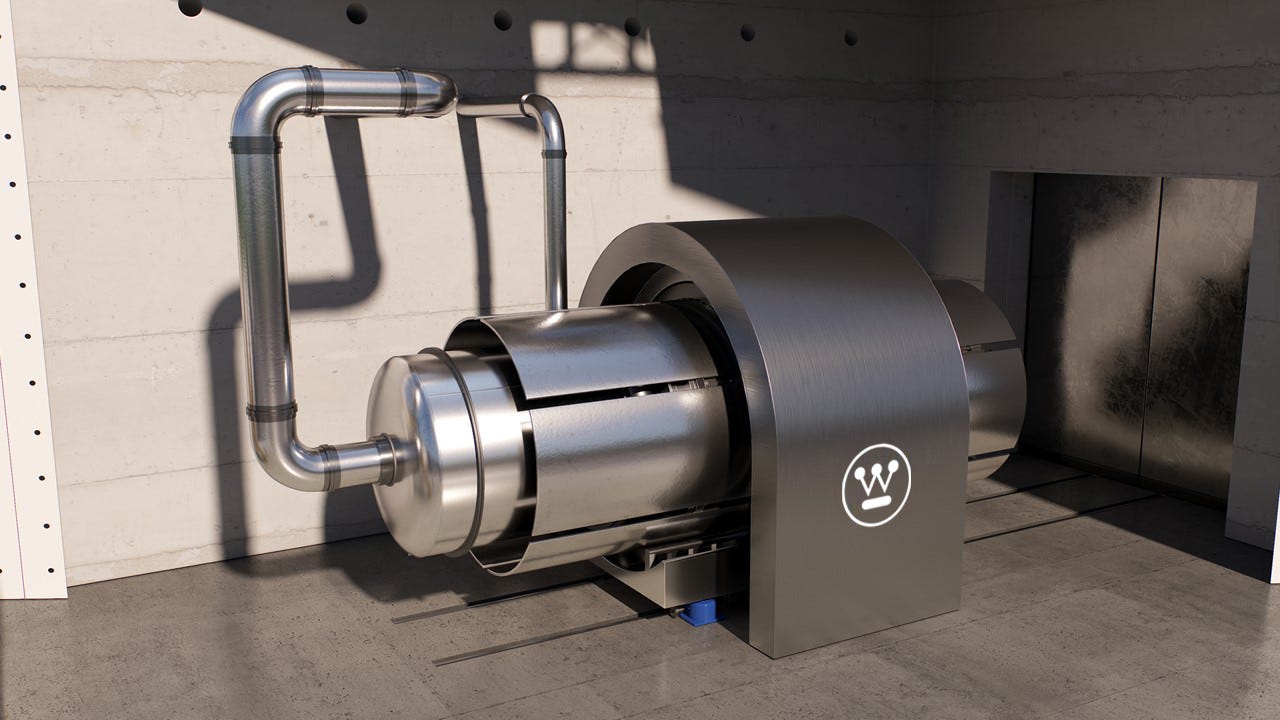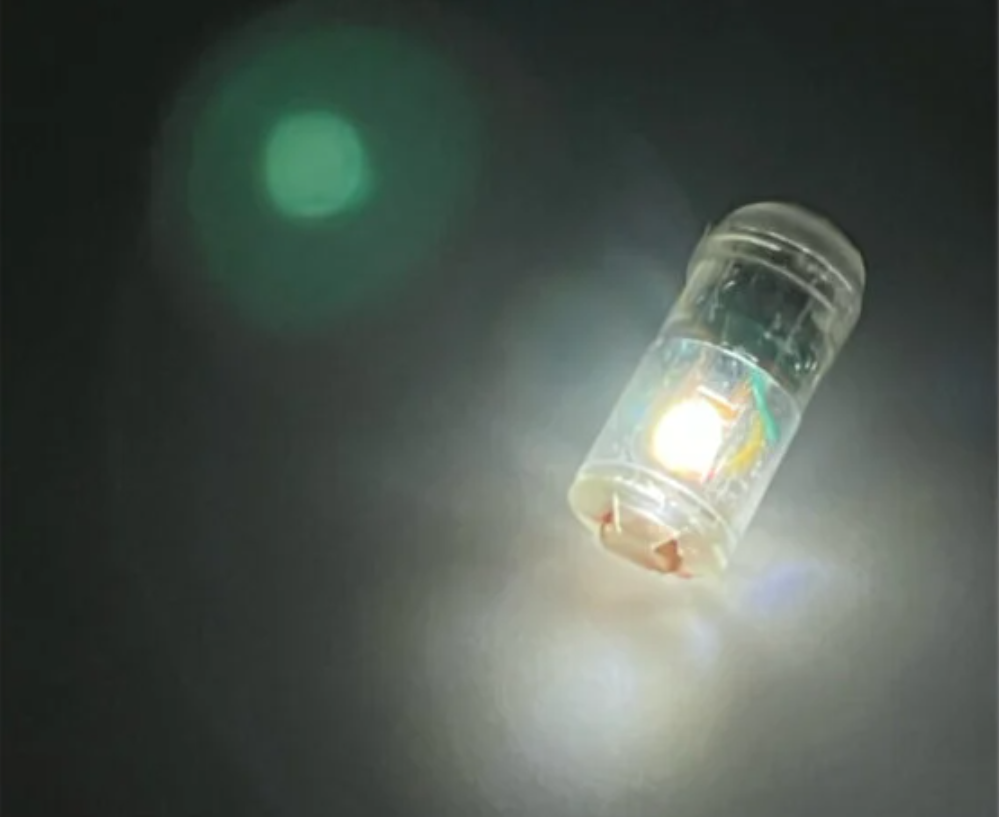The U.S. is testing portable micro nuclear reactors for safe power in remote locations
Microreactors will begin testing in Idaho by 2026 to deliver safe, portable nuclear power for remote sites and national security.

The Vinci Microreactor from Westinghouse was chosen by the Department of Energy’s National Reactor Innovation Center to be tested at Idaho National Laboratory as part of its Microreactor Experiments program. (CREDIT: Westinghouse)
Nuclear energy is undergoing a shift—not toward massive power plants, but toward compact, portable systems that bring electricity to places once considered too remote or too vulnerable.
The U.S. Department of Energy (DOE) has taken a major step in advancing this vision by announcing two initial test projects at its new Demonstration of Microreactor Experiments (DOME) facility in Idaho. This marks the first global facility of its kind, built to test small, self-contained nuclear reactors that can deliver power reliably, quickly, and safely.
Located at the Idaho National Laboratory, DOME is designed to test microreactors that produce up to 20 megawatts of thermal energy. Unlike traditional nuclear plants that supply hundreds of megawatts, microreactors focus on agility and efficiency.
The two initial designs selected—eVinci from Westinghouse and Kaleidos from Radiant—will undergo testing starting as early as spring 2026. These reactors aren’t meant to power entire cities. Instead, they’re tailored to support isolated areas, military bases, disaster zones, or even data centers—places where power is critical but difficult to deliver.
Compact Reactors, Big Potential
The selected microreactors vary in design and application but share a goal: safe, decentralized power. Westinghouse’s eVinci reactor will be tested to validate a transportable design that can deliver 5 megawatts of electricity using passive heat pipe technology. It doesn’t require moving parts or active cooling systems, making it safer and easier to maintain. Just two acres of land can house an eVinci unit, making it ideal for small communities, mining operations, or remote installations where traditional infrastructure is hard to build.
Radiant’s Kaleidos system takes a different approach. Designed as a high-temperature gas reactor, Kaleidos can generate 1.2 megawatts of electricity. It’s aimed at replacing diesel generators that are commonly used in off-grid or backup settings.
With the ability to run continuously for five years before refueling, Kaleidos could provide uninterrupted electricity to hospitals, military outposts, or emergency shelters. Its compact design also allows it to be moved by truck, plane, or train—an important feature when flexibility and speed matter most.
Related Stories
- Compact eVinci nuclear reactor can power 4,500 homes for 8 years without water
- Student built a $2,000 working fusion reactor in their bedroom
- China’s tokamak nuclear reactor smashes global fusion record
The DOE defines microreactors as nuclear systems capable of producing between 1 and 50 megawatts of energy. While that may sound small compared to conventional nuclear reactors, which generate hundreds of megawatts, these miniature systems are meant to fill specific needs. The average household in the U.S. uses about 0.03 megawatts per day, so even a smaller reactor like Kaleidos could support many homes in a rural or isolated location.
How DOME Will Work
The DOME facility will act as a testing ground where these new microreactor technologies can be put through real-world conditions. Built on the existing infrastructure of the Idaho National Laboratory, DOME supports up to six months of continuous operation for each reactor. Data collected during these tests will help developers improve safety, performance, and readiness for commercial deployment.
The DOE selected Westinghouse and Radiant in 2023 through a competitive process to prepare for this next phase. Since then, both companies have been working through a multi-stage authorization pathway. This includes design approval, fuel readiness, safety reviews, and regulatory steps needed to bring the reactors to full test status.
The companies fund their own test campaigns and must meet key milestones to maintain their access to the test bed. The sequencing of experiments depends on technical preparedness, available fuel, and regulatory clearance.
Testing will begin in 2026, but the DOME facility is already under construction. It is operated by the National Reactor Innovation Center, which draws on the combined expertise of multiple national laboratories to speed up the development of new reactor technologies. The current application round for future tests has closed, and the next is expected to open in summer 2026.
A Push for Energy Innovation and National Security
Microreactors align with broader goals of reshaping how the U.S. approaches energy security and innovation. The DOE emphasized that these compact systems could soon play a major role in powering homes, military bases, and key infrastructure.
Mike Goff, the DOE’s Acting Assistant Secretary for Nuclear Energy, noted, “Microreactors will play a big role in expanding the use of nuclear power in the United States. These DOME experiments will test new reactor designs that will be counted on in the future to reliably power our homes, military bases, and mission-critical infrastructure.”
This initiative also fits into a larger push for American leadership in nuclear energy. The program not only helps private firms like Westinghouse and Radiant reduce the financial risk of developing new technologies, but it also strengthens U.S. competitiveness on the global stage. According to the DOE, the new testing ground will “unleash American innovation” and support the safe rollout of next-generation energy solutions.
These microreactors are designed with transportation and speed in mind. Whether by road, rail, or air, they can be deployed rapidly to regions struck by natural disasters, cyberattacks, or equipment failures.
In those moments, traditional grid access may be unreliable or destroyed. These compact reactors provide a backup option that doesn’t depend on fuel deliveries or massive infrastructure. They’re small, safe, and ready to activate when needed most.
Looking Ahead to a Scalable Nuclear Future
The coming experiments at DOME represent more than just engineering milestones—they reflect a new approach to how nuclear energy fits into the modern world. Rather than building massive plants that take years and billions of dollars to complete, companies are now working toward scalable models that adapt to diverse needs. With smaller footprints, quicker deployment, and flexible use cases, microreactors could transform how energy is distributed across the U.S.
The Department of Energy’s roadmap includes multiple phases of testing and development. Each milestone reached by eVinci and Kaleidos brings their respective technologies closer to real-world deployment. With commercial versions already being prepared, these tests may soon lead to practical solutions for hard-to-reach communities, climate resilience strategies, and secure energy for national defense operations.
As construction continues at DOME, and as the first reactor units prepare for their 2026 debut, the energy landscape is being reshaped—quietly and powerfully—from the ground up.
Compact eVinci Microreactor Powers Thousands in Canada
The same eVinci microreactor is set to debut in Saskatchewan by 2029, promising to deliver clean and compact nuclear power. Designed as a 5 MWe (and 15 MWth) unit, it can operate continuously for eight years without refueling or water cooling. Each reactor could supply electricity to approximately 4,500 homes, potentially reducing carbon emissions by up to 55,000 tonnes annually.
Backed by an $80 million CAD investment from the Saskatchewan Research Council and provincial government support, the eVinci microreactor project aims to diversify energy options and enhance sustainability. Premier Scott Moe praised the initiative for its adaptability and clean energy output. By 2029, the project is expected to offer a reliable, modular energy solution that departs from fossil fuel dependence.
Globally, eVinci is part of a broader trend toward microreactors—small-scale nuclear systems intended to support off-grid sites, military operations, and resilient infrastructure.
Note: The article above provided above by The Brighter Side of News.
Like these kind of feel good stories? Get The Brighter Side of News' newsletter.



